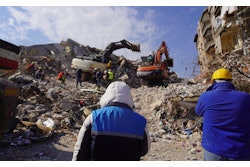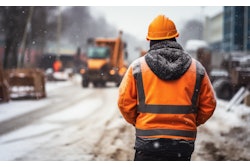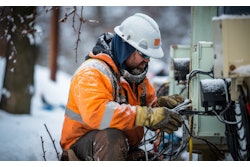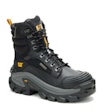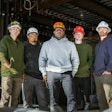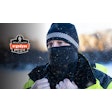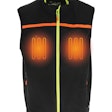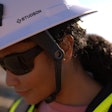
It is that time of the year in most parts of the country where construction workers dress in a hooded garment for comfort. But the job also may demand visibility – that’s where high visibility hoodies come in. In comparing high visibility hoodie patterns, a construction worker must consider specific job requirements as well as personal comfort preferences.
The Occupational Safety and Health Administration and the Federal Highway Administration have specific guidelines and standards regarding wearing high visibility clothing – including hoodies – that encompass those issued by the International Safety Equipment Association (ISEA) and the American National Standards Institute (ANSI) in ANSI/ISEA 107-2020.
Types of Hi-vis Hoodie Patterns
ANSI-rated high-visibility apparel is based on garment type and class.
- Type R: Used in roadway work – provides daytime and nighttime visual enhancements and encompasses Class 2 and Class 3
- Type 0: Used for off-road use in low-risk situations or where traffic is under 25 miles per hour – encompasses only Class 1 apparel for moderate visibility
A Class 1 hoodie is used for work in the lowest risk areas, such as away from an active roadway and where the background is not complex. They are worn on worksites where traffic is travelling no more than 25 miles per hour. They can be safety yellow or safety orange and utilize at least 155 square inches of reflective stripes.
A Class 2 hoodie is worn to stand out against a background of many colors and depth, such as found in road construction. It provides additional high visibility materials and enables detection and identification of workers from longer distances. A Class 2 hoodie is worn during the day or night on worksites where traffic flows from 25 to 50 miles per hour. Typical Type R Class 2 safety apparel has 775 square inches of background material and at least 540 square inches for smaller clothing, 201 square inches of retroreflective or combined-performance materials and at least 1.38 inches width of retroreflective material and one inch width for split trim design.
Type R ANSI Class 3 apparel is worn on jobs necessitating high visibility, mobility and flexibility, such as working in high-speed traffic more than 50 miles per hour and high-risk environments where visibility of workers may be reduced. The apparel is worn in hazardous environments as they feature the most background material and reflective striping: a minimum of 1,240 square inches of safety yellow or safety orange background at least 310 square inches of reflective striping.
All ANSI classes of safety apparel must have at least two types of material: background and retroreflective/combined performance material.
Colors and Markings
ANSI-approved background colors for safety apparel includes yellow-green and orange-red.
The striping seen on safety apparel is retroreflective material which reflects light directly back to the light source. It is highly visible at night with direction lights, such as vehicle headlights. The striping is typically silver, white, or gray and is placed on the vest in an ‘H’ or ‘X’ pattern. Apparel with an 'X' marking on the back and the 'H' on the front is designed to warn oncoming vehicles which direction the worker is facing and if they need to alert the worker.
Silver reflective tape is the standard for most high visibility clothing. It is considered durable and reflects light effectively.
Below the reflective layer is contrasting tape, which serves to help the garment meet the highest safety standards. Lime is used on orange garments; orange is used on lime garments. Tape can be continuous or segmented, the latter of which is designed to increase visibility and comfort, as it moves with the worker wearing it.
Flame resistance and electric arc protection may be other safety features found in high-visibility hoodies.
Limitations
Wearing hoodies – even those made of high-visibility material – have potential drawbacks. One consideration is wearing a hoodie and a hard hat. If it is safe to do so, the hard hat straps and suspension system should be adjusted to accommodate the extra layers of the hoodie and still provide a snug and secure fit.
A detachable hoodie may address any issues. A hoodie also may impair the ability to hear sounds clearly.
It also may obstruct peripheral vision or restrict head movements. A three-piece hood design may offer a better fit and peripheral vision.
